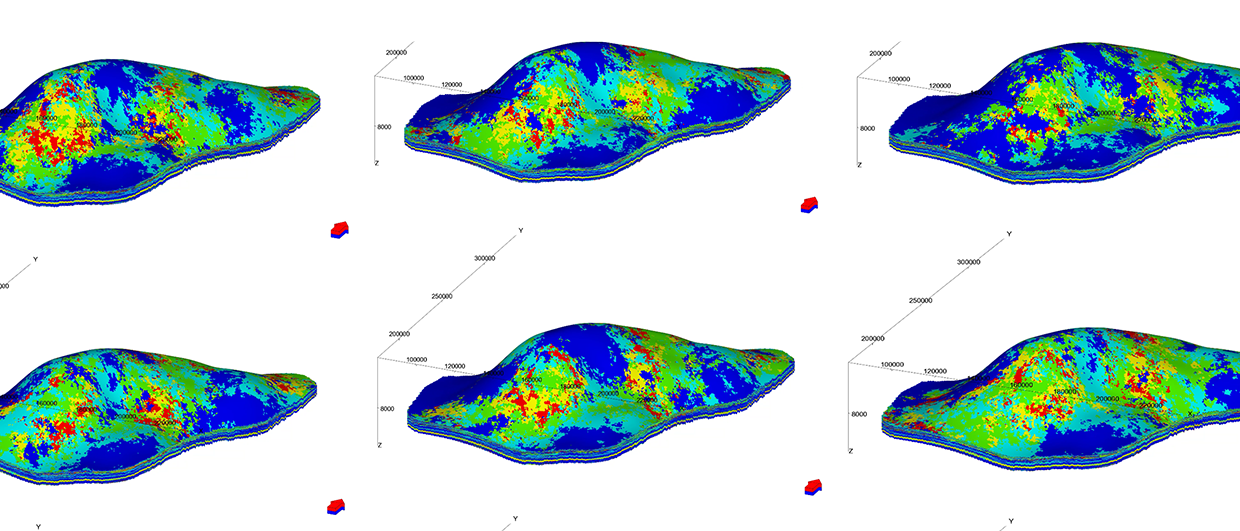All exploration and production companies value their formal geophysical and geological data as fundamental. Their geoscientists need the data for the discovery and development of hydrocarbon reserves. During their work, geoscientists also develop notes and documentation which support their conclusions. The resulting enhanced data – the combination of the formal technical data and the supporting documentation and notes – continues to grow in value over time and becomes a company’s “crown jewels”.
Even though the value of this enhanced data is recognized, companies must continue to take special care with its preservation. With demand galloping ahead at record rates as economies improve in developing nations, enhanced data is what makes it possible to continue to find and produce hydrocarbons in ever more challenging conditions. And since management of assets spans decades, it’s this data that will connect current to future generations of energy company workers.
“Enhanced data – the combination of the formal technical data and the supporting documentation and notes”
The Problem
Sadly, even for today’s most seasoned veterans, much of this data remains inaccessible – stuck in ‘islands’ on people’s desktops and isolated in local and regional data stores. As computer technology advanced during the 1990’s, data and the applications used for its analysis proliferated. Though some of the formal ‘structured’ technical data may have come under formal management, much of the supporting information remained ‘unstructured’ – stuck in millions of memos, spreadsheets, presentations and emails.
The data problem is compounded by a staggering array of software applications used within typical E&P operations. It’s not unusual for an E&P operation to use dozens of different software applications to interpret, organize, visualize, and manage its data. And of course, the data can’t easily be shared or linked across these applications.
The result is that valuable “crown jewels” of E&P data are scattered everywhere in data storehouses few can access fully, and many applications simply don’t read data from other applications.
“The data problem is compounded by a staggering array of software applications used within typical E&P operations.”
The “Gap” in Communication: How it Impacts Integration
A common undercurrent among petroleum engineers and geoscientists is their bewilderment over hoards of software companies touting the latest and greatest E&P applications, data management and integration technology (IT). Though these technologies may certainly help companies solve their data challenges, unfortunately people from these companies talk largely in IT terms, which are often not understood by the engineers and geoscientists – the very people who would benefit the most from these solutions.
“I have no idea what they’re talking about,” admitted one petroleum geologist. “It’s like they’re speaking in a code that only the most diehard ‘data nerds’ understand.”
It’s easy to understand that this ‘gap’ in understanding is already very much a limiting factor in this industry.
How much more limiting could it become down the road if more is not done to help newer as well as older workers access the wealth of information “somewhere out there,” and bring it in readily useable form to the desktops where it’s needed most?
“I have no idea what they’re talking about. It’s like they’re speaking in a code that only the most diehard ‘data nerds’ understand.
Decoding ‘Geek’ Gibberish
How does a person without an IT background, whose focus is on engineering and geoscience, make sense of all the “techno-geek” gibberish and find integration and data management solutions that are user-friendly?
One way is to avoid all of the techno-speak and focus on specific needs that will ensure the solution that’s purchased will work today, with room for future growth and expansion.
Here are a few rules of thumb:
1. Select only “vendor neutral” data management and integration platforms.
Some providers offer “solutions” for integrating and managing E&P data that in reality lock you in to using only that provider’s software. To compete in today’s market you need the flexibility to choose software that is most suited to your operation’s specialized situations, regardless of the vendor.
2. Focus on applications that provide user-friendly features, such as screens with clear icons that almost anybody can learn intuitively – think “Google.”
An effective integration/data management solution will be largely a point-and-click proposition – not something that poses a multi-year learning curve.
3. Make sure that the data management and integration solution selected handles ALL of your information types – and can easily expand to handle others.
These include “structured” G&G data, plus reports, interpretations, Excel charts, PowerPoint slides, maps, diagrams, memos and even relevant e-mails.
4. Select a provider with experience in your industry.
Domain-specific knowledge on the part of your provider will speed implementation and help you all speak the same language from the start. And for their part, they should bring the in-depth IT knowledge necessary to make the project work, in addition to their understanding of E&P.
Use it
Hydrocarbons are too precious a resource to waste, and so are the data that the geoscientists use to find those hydrocarbons.
Time lost and money lost due to downtime from missing or unreadable data is already a serious problem in the oil and gas industry.
Effective solutions to maximizing accessibility and use of data need not be complex. User-friendly, software/vendor neutral technology that integrates all types of data is out there, here and now. Use it!





